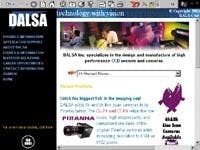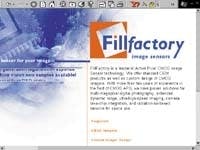Wilson's Websites
Today's trade publications have been touting the benefits of CMOS-based imagers over their CCD counterparts. CCD designs, they say, will be easier to fabricate because they use "standard" CMOS fabrication lines as opposed to the specialized processes required by CCDs. CCDs continue to provide superior performance over CMOS imagers, however. This month, we take a look at some sites that offer insight into the differences between the two technologies.
Bugeye/visionchips/vision_chips/vision_chips.htmlAlireza Moini's book, Vision Chips or Seeing Silicon, was developed at the department of electrical and electronics engineering of the University of Adelaide (Adelaide, Australia) three years ago. This lengthy work is invaluable for anyone wishing to study imaging devices. With descriptions of nearly every device ever developed, this site includes information and comparisons on devices ranging from Carver Mead's silicon retina to logarithmic sensors using MOS diodes.



